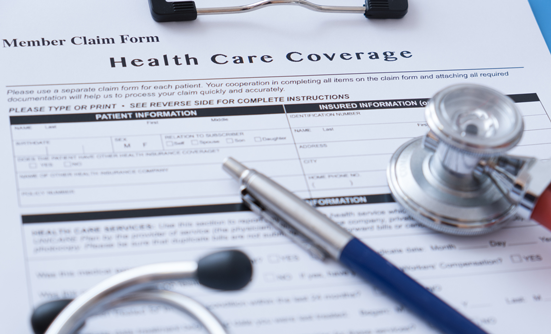Jim, an uninsured 54-year-old man who was diagnosed with stage III lung cancer, has been able to get radiation therapy through a charity care program. He now needs chemotherapy, which is not covered through that program.
The $800 per month he receives from the Social Security Disability Income doesn’t leave him enough money to purchase health insurance, and Medicaid has not been expanded in his state, Texas, so he can’t get Medicaid. Thousands of patients with cancer across the United States face this situation.
Although the healthcare reform intended to make health insurance more affordable for Americans, according to a Gallup poll, 12.9% of Americans were still uninsured by the end of 2014. And although hospitals are required to provide emergency care to patients without insurance, they are not required to start longterm treatment or provide continuing treatment to uninsured patients.
Health Insurance Assistance Service for Patients with Cancer
Fortunately, help is available from programs such as the American Cancer Society’s Health Insurance Assistance Service (HIAS) that can connect patients with cancer with health insurance specialists who work to address their needs.
“Whether it’s through the marketplace, outside the marketplace, through a significant other, or Medicaid our first goal is to get patients insured,” said Mandi Battaglia Seiler, Team Supervisor for HIAS and Clinicals Trials Matching Service at the American Cancer Society. “If we can’t find them coverage, we look for other resources, such as hospitals that provide reduced rates or charity care programs. We have a cancer resource connection with thousands of listings nationwide.”
According to Ms. Seiler, many patients are finding it difficult to understand the new health insurance system, because of administrative complexities. “We help patients sort through all the options, and provide starting points for them to find coverage,” she said. “We provide whatever resource we can, and give them the correct verbiage to help them get what they need.”
Help from Patient Navigators
The American Cancer Society also has patient navigators in 120 hospitals throughout the country, as part of their Patient Navigation Program. “Our navigators assist patients by removing barriers (including financial, transportations or insurance issues) and assisting with communication with healthcare providers to help patients see their treatment through to completion, thus leading to better health outcomes,” said Monica Dean, Manager of the Patient Navigation Program.
“The navigators know what programs their hospitals offer for financial assistance, and they’re familiar with community resources in the area. They also have access to our national resource listings. If they identify someone without insurance, they can help pinpoint what is available to them in the way of assistance,” Ms. Dean added.
Furthermore, she said, “We refer patients to the Patient Advocate Foundation for help with medical-related debt consolidation and debt relief. In just 2 months last year, they helped our patients with $2.5 million in debt relief.”
Other National Programs
Other programs help uninsured and underinsured cancer patients. “Many pharmaceutical companies provide prescription assistance programs on a need basis,” Ms. Dean said. “Hospitals may also have their own charity care programs, and CancerCare, a national nonprofit organization, provides financial assistance based on grants they receive each year.”
In addition, she added, “there are organizations specific to certain cancers, such as the Leukemia & Lymphoma Society, which provide a copay assistance program as well. It’s really about knowing what is available, and pulling all that information together to help meet a patient’s needs.”
Ms. Dean suggests that uninsured patients or those who are facing financial difficulties related to their cancer reach out to social workers, the financial assistance department, nurses, clinical nurse navigators, or doctors at their healthcare facility to identify resources.
Patient Resources
- American Cancer Society National Cancer Information Center
www.cancer.org/treatment/findingandpayingfortreatment/ managinginsuranceissues/healthinsuranceandfinancialassistanceforthecancerpatient/health-insurance-and-financial-assistance-outside-sources - CancerCare
www.cancercare.org/publications/62-sources_of_financial_assistance - Cancer Financial Assistance Coalition
www.cancerfac.org/ - Patient Resource
www.patientresource.com/financial_resources.aspx - Manage Cancer
www.managecancer.org/resources/financial-support.aspx - Cancer.net
www.cancer.net/navigating-cancer-care/financial-considerations/financial-resources - Self
www.self.com/life/health/2014/09/2014-cancer-resource-guide






